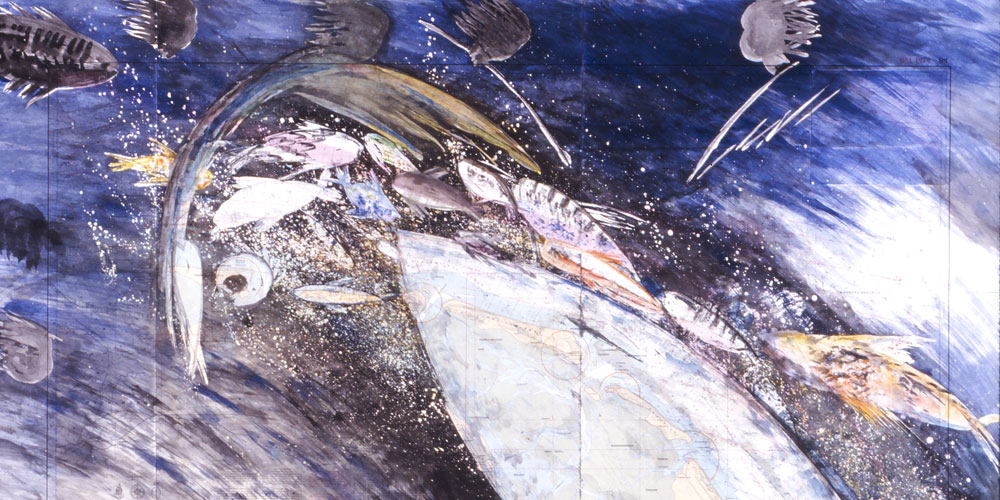Home
- DE / EN
Welcome
“With her curious, enquiring mind Ursula Huth is always travelling, always searching for new ways to express her personal view of the world. At the same time, her work communicates an inner calmness and concentration on her very personal images and messages.
Her range of creative and expressive means bears an amazing variety, from hot work with glass at the furnace or kiln to graphic drawing and collage techniques, from cold glass techniques to glass painting and even etching of multi-layered flat glass. Especially her glass panels, which have from the beginning of her artistic career been at the core of her work, benefit from this versatility. However, for thirty years she has also been modeling three-dimensional sculptures in the pâte-de-verre technique, which display a rich, translucent inner and outer life. Connections of glass to other materials (e.g. to metals such as lead foil or cast bronze, or to print materials such as maps) weave through her work. In addition she takes architectural commissions as welcome challenges.
Her imagery is reduced and sketch-like. It appears concentrated, and yet shows a great variety in meaning and form. Occasionally anecdotes and biographical notes are hinted at. Symbols, marks and signs, also fragments of words and sentences, direct the viewer’s imagination; they awaken memories, and invite you to think on. Over all of this there lies a poetic atmosphere, with a fundamental presence of what can’t be interpreted, of the secretive and of the magical.”
Dr. Helmut Ricke, Kunstmuseum Düsseldorf, 1971-2008 Director Hentrich Glass Museum
“One cannot help but be impressed by the freshness of Ursula Huth’s pictorial world, imbued with life by the light that filters through it.
In each of her various stained glass works, the lead cane partitions, looking as if they were drawn in freehand, are laid with an exquisite sense of balance. Suche scene divisions produce an effect suggesting a multifaceted expanse of time and space. Huth always strives to strike a balance between the spontaneity of the imagery that occurs to her and the deliberate control needed to express it.”
Yoriko Mizuta, Curator, Hokkaido Museum of Modern Art




